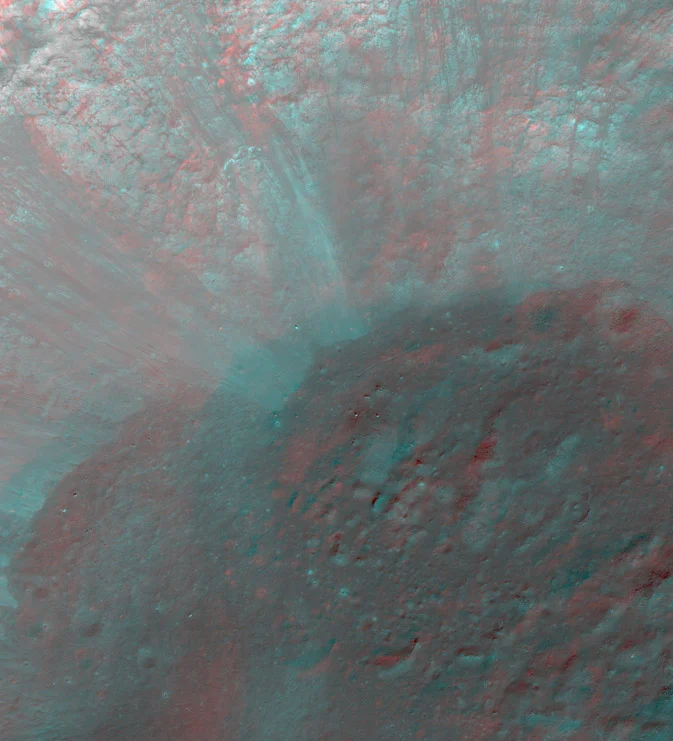NASA’s Lunar Reconnaissance Orbiter (LRO) has acquired stereo images of the moon in high resolution (0.5 to 2 meters/pixel) that provide highly detailed 3D views of the surface.
The LRO Camera Narrow Angle Camera (LROC NAC) team at the University of Arizona and Arizona State University are currently developing a processing system to automatically generate anaglyphs from most of these stereo pairs. For the uninitiated, an anaglyph is an image that can be viewed in 3D using red-blue/green glasses.
LROC acquires stereo images by targeting a location on the ground and taking an image from one angle on one orbit and from a different angle on a subsequent orbit.
According to NASA, anaglyphs can be used to helo improve our understanding of the 3D structure of the lunar surface. For example, the LROC NAC anaglyphs make lunar features such as craters, volcanic flows, lava tubes and tectonic features jump out in 3D. The space agency plans on releasing its NAC anaglyphs in 3D to the general public which can be found here.
In the meantime, you can also check out the four images below snapped by the LRO.
Korolev Lobate Scarp
Lobate scarps (a type of cliff) on the moon are found mostly in the highlands, and are relatively small and young. Scientists propose that they form as result of fracturing of the crust as the moon shrinks. Why is the moon shrinking? As the core slowly cools portions freeze from a liquid to a solid thus taking up less volume. Since the lobate scarps are small, hundreds of meters to several kilometers in length, and 10 to 50 meters in height, they must be young; otherwise everyday small meteor bombardment would have obliterated them.

Janssen K Crater
Janssen K is a roughly 12-kilometer-diameter crater on the floor of the large Janssen Crater. Several debris flows can be seen running down the walls of the crater.

Alpes Sinuous Rille
An ancient channel formed as massive eruptions of very fluid lava poured across the surface of the moon. The Apollo 15 astronauts landed on the edge of a Hadley Rille.

Orientale Sculpture 4
Ancient radial scars of ejecta extend out from the Orientale basin for hundreds of kilometers and consist of aligned craters and massive dune-like forms. They formed as streamers of lunar rock thrown out from the Orientale impact and crashed back to the surface.







